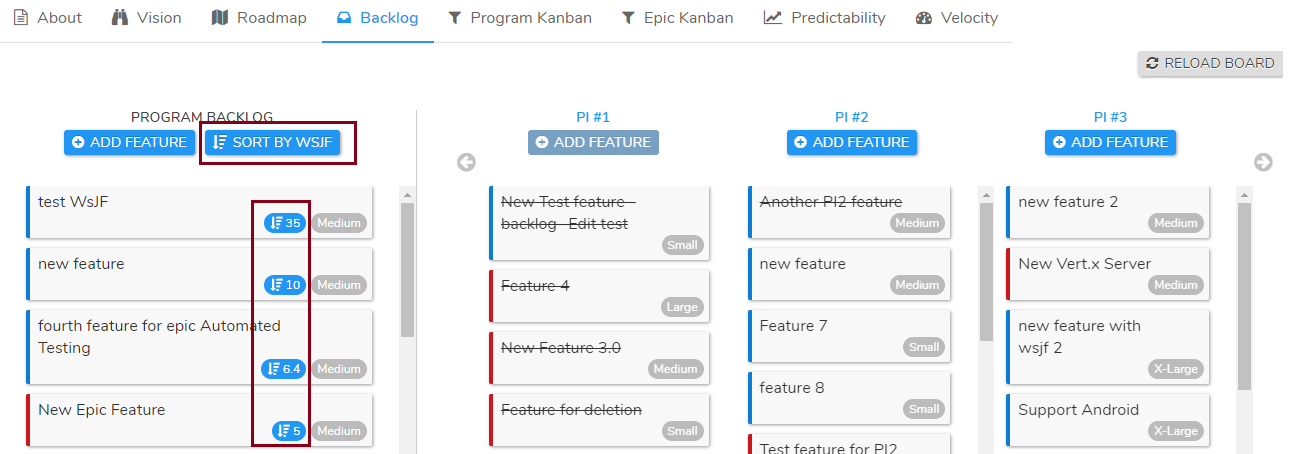Managing Program Backlogs with Metronome

Grooming a Backlog can be complicated effort and requires ongoing collaboration. Metronome incorporates real-time access and automated Weighted-Shortest-Job-First (WSJF) features in our Program Kanban and Program Backlog views
Whether you are kicking off your first Agile Release Train (ART) or are well versed in the principles of SAFe, a well groomed and elaborated backlog can set the tone for each Program Increment (PI), and if not completed, add unnecessary risks to your project. View the Program Backlog video demonstration on Metronome’s YouTube Channel.
In SAFe, PIs run every 8-12 weeks and include the following activities/ceremonies:
- Planning
- Execution
- Demonstration
- Inspect & Adapt
The Program Backlog serves as the holding area for upcoming Features. In a traditional or waterfall development approach, Features are essentially Requirements. They address user needs and provide benefits to the business, usually economic benefits. In SAFe, Features describe what new things system will do for the users and the value the users will derive from the Features. These are generally described as the “Business Features”. In addition, SAFe also supports “Enabler Features”. Enablers look ahead at technical exploration or infrastructure needs of the system. SAFe incorporates time to plan for architectural needs in every Increment.
As Teams and Trains head into PI Planning, the Program Backlog is used to break-out and estimate work. Therefore, it is essential the Backlogs are properly reviewed and prioritized AHEAD of the PI Planning efforts. There needs to be a wide range of inputs into the Program Backlog in order to understand the economic benefit (or detriment) and prioritize. This is not a one-time event, this must be an ongoing and pro-active effort.
As you can imagine, it is important to gather input from a variety of Stakeholders to properly assess the value and complexity of Features. Customers, Business Owners, Product Management, Architects & Engineers are all included. Because this activity has such high visibility and repercussions, using a tool which can provide visibility in real-time and automate calculations for weighting can be a real game-changer for your Organization and ART.
Metronome enables users to manage and prioritize Features using the Program Kanban and Program Backlog. Our Program Kanban shows Features in the Funnel, Analyzing and Backlog stages. All new Features are added to the Funnel stage, and can be created with a single click.

Features that align with the Vision and support the Strategic Themes, in the “Funnel” stage, can be moved to the “Analyzing” stage for further exploration. In the Analyzing stage, product managers define the Features, their benefit hypothesis and break them down into Stories. The highest priority Features analyzed and approved by Product Management are then moved to the Program Backlog.
The Program Backlog tab allows Product Managers to manage and prioritize the Program Backlog. Features are prioritized using WSJF, short for Weighted-Shorted-Job-First method. Metronome automatically calculates the WSJF and allows stakeholders to sort the features by their WSJF-based priority.

Metronome incorporates SAFe and Kanban practices out-of-the-box to support your SAFe implementation and ensure all stakeholders have real-time access and visibility into the Program.
About the author: Stacy Metro is a certified SAFe Program consultant (SPC) and Project Management Professional (PMP) with 20 years of experience in systems modernization, business process re-engineering, and change management in both public and private sectors. Stacy leads the Radus Software Strategic Planning service area, with responsibility for client delivery and internal Radus operations.

